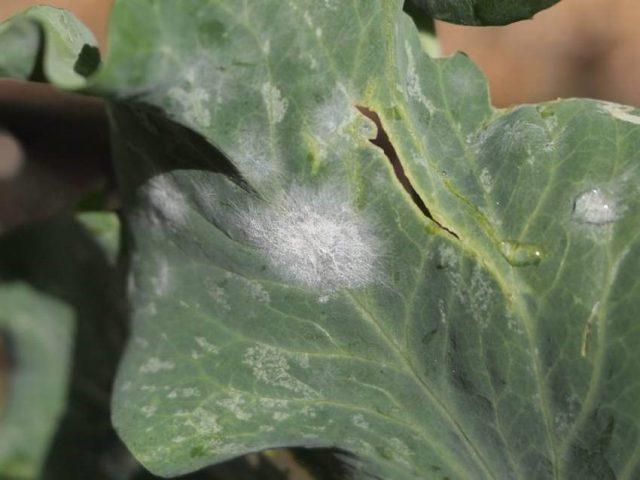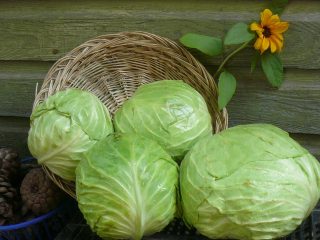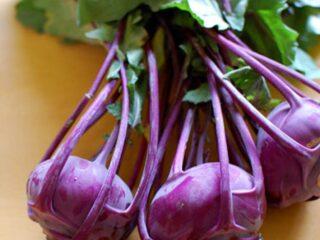Content
There are many varieties of white cabbage of Russian and foreign selection. They cannot be called unique or even outstanding - they are simply reliable and long-proven “workhorses” with known pros and cons. This category also includes Tochka cabbage. The early-ripening variety consistently demonstrates good yields in most Russian regions.
Description and characteristics of Tochka cabbage
Tochka cabbage is an early-ripening domestic variety bred at the Federal Scientific Center for Vegetable Growing in Western Siberia. It was created back in the USSR (1987), but due to protracted variety trials, in 1992 it was included in the Russian State Register of Breeding Achievements.
According to the official recommendation, the variety is suitable for cultivation in most of Russia. The exception is the Far East and the Northern region, but local gardeners consider this to be unfounded.

Now Tochka cabbage seeds are produced by several agricultural companies under license
The rosette of cabbage leaves is semi-raised, relatively compact (45-70 cm in diameter).The leaf blades are medium-sized, rounded, with a characteristic “cabbage-green” color, with slightly wavy edges and not too clearly defined veins. The layer of bluish-gray “waxy” coating is thin, almost indistinguishable.
The weight of the heads of cabbage is small; there is a strong “scatter” in weight (0.7-1.7 kg). Unlike many early varieties, they are quite dense and yellowish-white when cut. The shape is rounded dome-shaped.

The outer stem of the heads of cabbage is quite long (10-12 cm), the inner stalk is thin and short (6-7 cm)
The sweetish taste is officially recognized as “good”. The leaves are tender and juicy, there are no hard veins in them. Tochka cabbage is intended for fresh consumption. It can also be added to any dishes and used as a filling for baked goods.

Tochka cabbage is not the best option for homemade preparations
Productivity
Official yield indicators for Tochka cabbage when grown on an industrial scale, demonstrated during variety trials, are 164-809 centners per hectare. Obviously, such a large “scatter” demonstrates the strong dependence of yield on climatic and weather conditions. However, despite this, Tochka cabbage “outstripped” the varieties chosen as “reference” varieties.
Amateur gardeners growing Tochka cabbage can count on 1.5-8 kg/m². The variety is characterized by massive and “friendly” ripening of heads of cabbage; they are completely removed from the beds within 2-3 days.
Advantages and disadvantages of the variety
Yields are affected not only by the local climate, but also by proper agricultural technology. She is unpretentious in care, so she “thanks” the gardener even for basic activities, if they are carried out correctly and on time.

Small heads of Tochka cabbage are well suited for consumption “at one time”
Pros:
- consistently high seed germination;
- compactness of sockets;
- early and “massive” ripening of the crop;
- successful resistance to many crop-threatening diseases;
- good transportability for an early variety;
- small size of fairly dense heads of cabbage;
- crack resistance;
- taste officially recognized as good;
- tender texture of the leaves, their juiciness, absence of coarse “fibers”;
- versatility of purpose.
Minuses:
- prone to pest damage;
- the presence of a long stem, which requires at least two hillings per season;
- looseness of heads of cabbage as a reaction to errors in agricultural technology.
Growing white cabbage Tochka
In most of Russia, Tochka cabbage is cultivated using seedlings. Sowing seeds directly into the ground is practiced exclusively in the southern regions, but even there this method is not preferred by all gardeners.
Growing through seedlings
Cabbage seedlings A point suitable for planting in a garden bed is formed within 45-55 days. It is transferred to open ground when the likelihood of repeated frosts in the spring is already minimal. In central Russia, this is approximately mid-May; accordingly, seeds need to be sown for seedlings in early April. In regions with a more severe climate, the planting and sowing dates are shifted 2-2.5 weeks ahead. In the south - about the same amount back.
Given the lack of immunity against diseases and the special “love” of pests, seeds must be treated in a solution of fungicide and insecticide before planting. Its concentration and processing time are determined in the instructions for the drug.
It is better to sow immediately in individual containers. This will allow you to avoid picking and the “losses” caused by it. And if you use peat pots or tablets, it is much easier to then transplant the Tochka cabbage seedlings into the garden bed.
The procedure for sowing seeds for seedlings is standard. Before emergence, they need warmth (20-25 ºС) and darkness. For seedlings, the temperature is reduced to 18-20 ºС during the day and 15-17 ºС at night. Care is limited to timely watering, providing 12-14 hours of daylight and normal aeration.

The height of adult seedlings is 12-15 cm, it has 4-6 true leaves
Seedless method
Tochka cabbage seeds are sown directly into the ground in the southern regions in the first ten days of April. They require similar preliminary preparation. Before emergence, it is recommended to cover the bed with black covering material or plastic film.
Tochka cabbage is sown in the garden according to the same pattern as seedlings - 40x60 cm. First, loosen the soil and water it moderately. The seeds are buried to a maximum of 1.5-2 cm. Then the substrate is moistened again.
Further care
Even an inexperienced gardener can cope with growing Tochka cabbage. Caring for her is limited to basic measures:
- Watering. Tochka cabbage especially needs water during the adaptation of seedlings to a changed habitat and at the initial stage of head formation. At these moments, the substrate should not be allowed to dry out. On average, a plant needs enough watering twice a week, the approximate norm is 3-5 liters per bush.
- Loosening and weeding. It would be more rational to mulch the bed with Tochka cabbage immediately after planting the seedlings in the ground.If this is not done, it will have to be loosened 2-3 times a month, simultaneously getting rid of weeds. This is done carefully; the root system of the plants is superficial.
- Fertilizer application. Like any early variety, Tochka cabbage requires two feedings. A week and a half after planting the seedlings, it is watered with a solution of mineral nitrogen fertilizer. As soon as the head of cabbage is tied, a complex cabbage preparation is applied.
- Hilling. It is carried out twice - 15-20 days after planting and another 20-25 days later.

Cabbage Tochka reacts negatively to both overdrying and waterlogging of the soil
Diseases and pests
Tochka cabbage does not have immunity at the genetic level against any pathogens. But it is characterized by relative resistance to many diseases dangerous to the crop - “blackleg”, various types of bacteriosis, fusarium.
Among other diseases, Tochka cabbage is most often affected by powdery mildew. Its main symptom is a grayish-whitish coating on the leaves resembling scattered flour, gradually becoming denser and changing its hue to lilac-gray.

Fabrics affected by powdery mildew dry out or rot, depending on the weather outside
Powdery mildew can be controlled using any fungicide. However, when choosing a preparation, you need to take into account that Tochka cabbage is an early ripening variety, and many of them have a fairly long “waiting period” until harvest.
Much more than from diseases, Tochka cabbage suffers from pests. It is regularly attacked by cabbage fly, cabbage aphid, and cruciferous flea beetle.
Therefore, it is strongly recommended not to neglect the treatment of seeds with insecticides before planting, and after transferring the seedlings to the garden bed, to regularly inspect the plants and use preventive folk remedies. If you still cannot avoid the attack, use the same insecticides.
Harvest and storage
Heads of Tochka cabbage reach the stage of consumer maturity 55-60 days after planting. When grown by sowing seeds directly into the ground, the harvest is harvested 110-120 days after emergence. In order for the taste to be as rich as possible, it is recommended to completely stop watering 1.5-2 weeks in advance, and choose the morning of a dry, fairly warm day for harvesting.

The harvesting period for heads of cabbage falls on July 10-20
Like all early varieties, Tochka cabbage is unsuitable for long-term storage and is not very suitable for home preparation. It is recommended to eat it fresh or use it to prepare any culinary dishes within 7-10 days from harvest if stored at room temperature. In the refrigerator, the “shelf life” can be extended to 2-2.5 weeks, but this is already the limit.
Conclusion
White cabbage Tochka is noticeably superior to many other early-ripening varieties in terms of yield, despite the fact that it does not differ in the large size of its heads. The taste is good, but not outstanding. Gardeners value this variety more not for its taste, but for its ease of care and resistance to some dangerous diseases typical of the crop.








